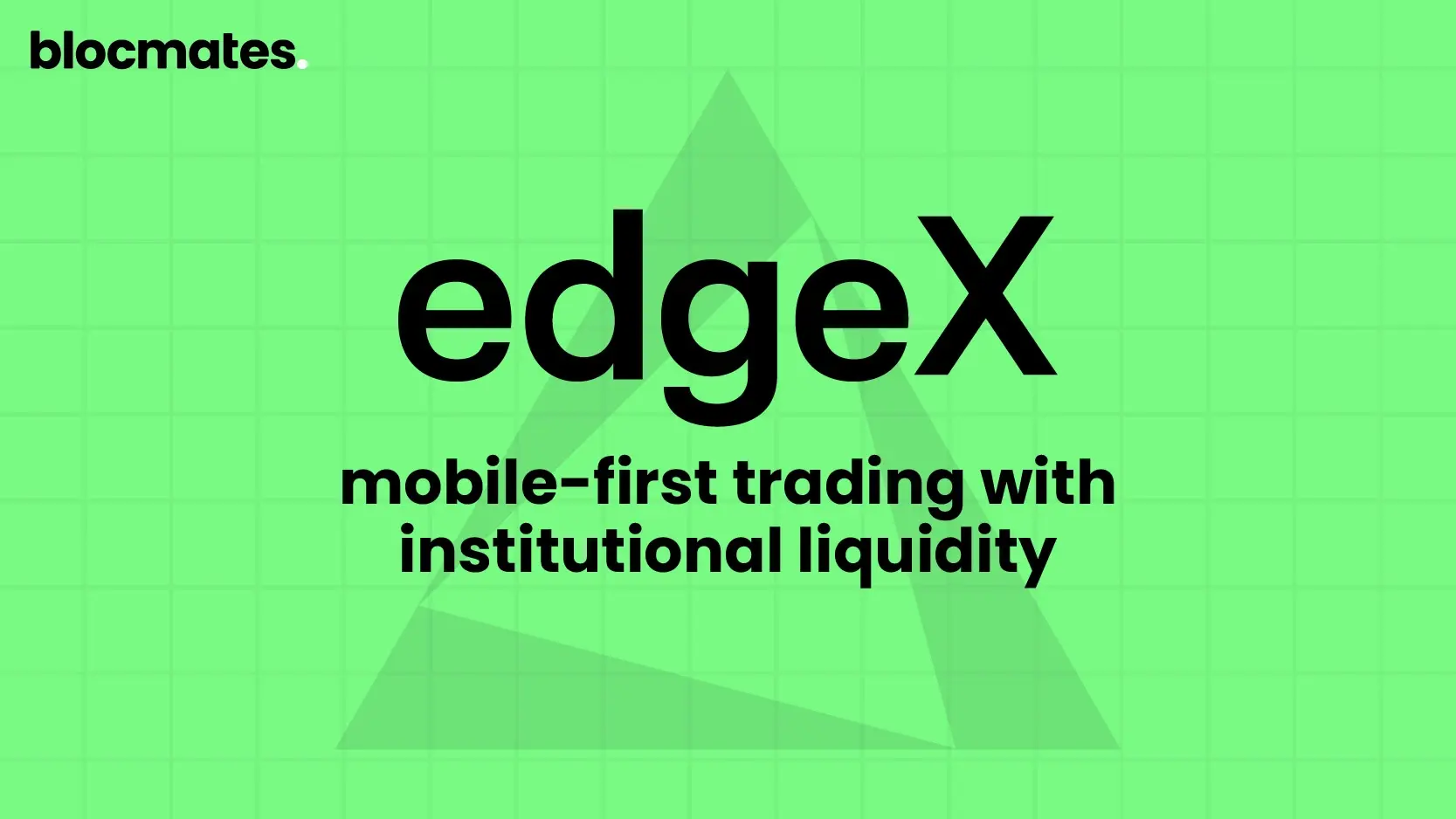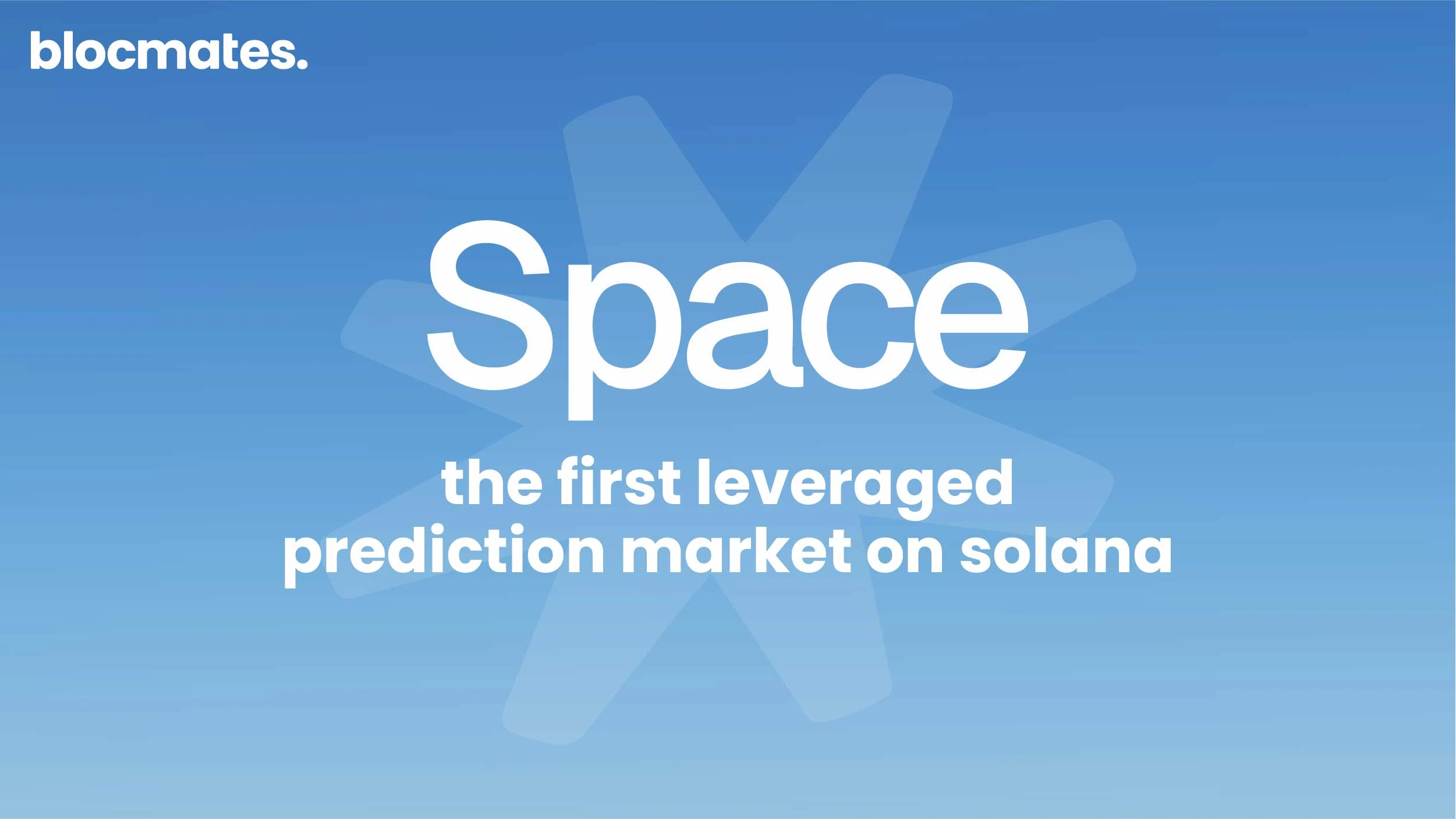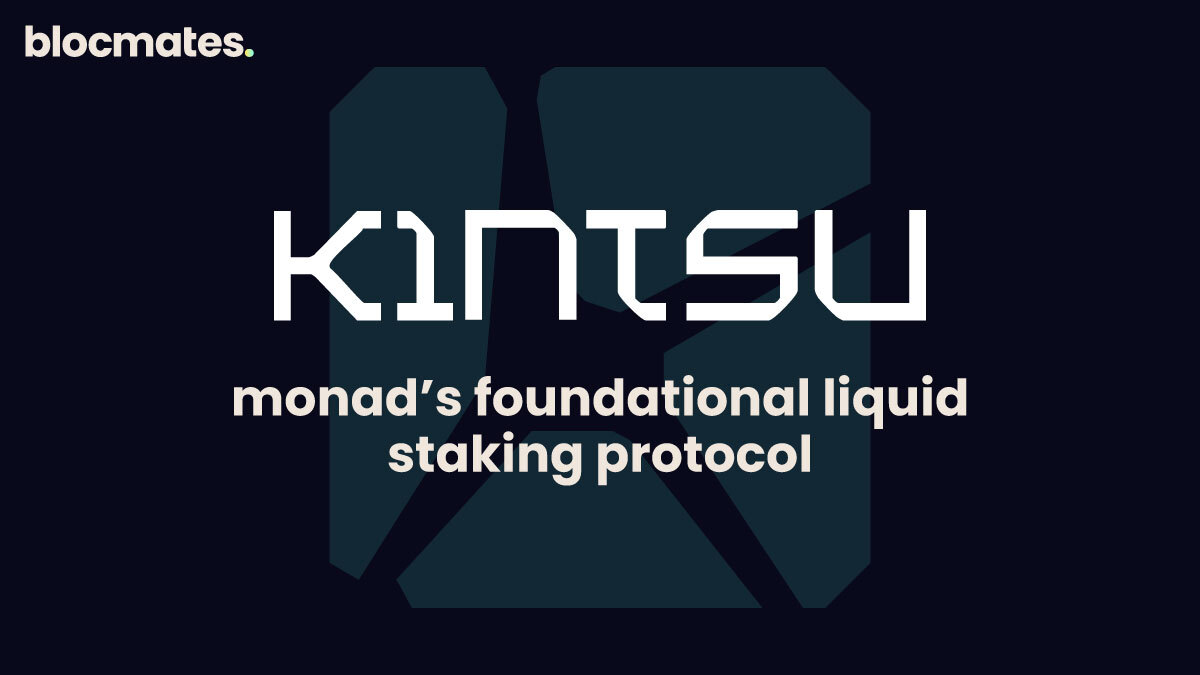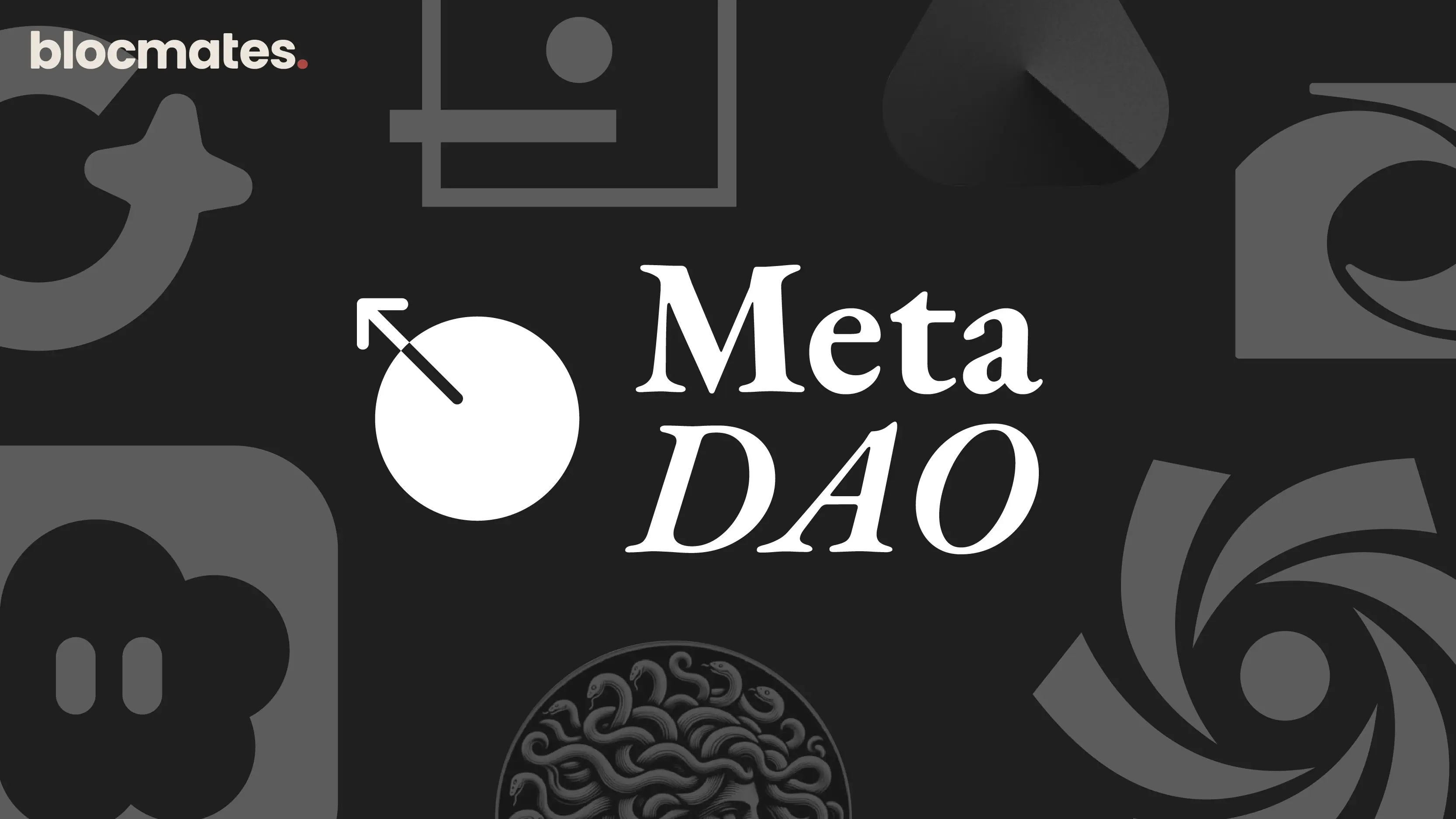If I had a dollar for every time I was told by a DEX project that they are going to be the ones to replace CEXs for good, I’d be chilling on an island rather than struggling in the depths of shitcoin degeneracy with the rest of you.
Granted, ever since the collapse of FTX there’s been strong demand to stay away from CEXs and migrate towards non-custodial, on-chain solutions. However, the fact of the matter is that none of these on-chain derivative DEXs have been able to reach the same UI/UX standards as traditional CEXs.
Whether it’s an AMM, vAMM, orderbook, or whatever else, the result often tends to be the same. Poor execution due to transaction times, higher slippage due to lower liquidity, fewer trading pairs, and all in all a far inferior user experience.
So you know what? Today I’m not even going to tell you that this is the future of France. All I ask you to do is sit back, have a read through this article, and make a decision for yourself.
I’m pretty sure you’ll come to the same conclusion as me.
The lay of the Crypto Derivatives land
At the moment, the crypto derivatives market does roughly $3T in monthly volume or $97B per day. That’s huge. In addition, over 80% of all volume in the crypto market comes from derivatives.
The problem, however, is that 99% of derivatives volume still takes place on centralised exchanges.
The FTX collapse is the prime example of why DeFi exists. Trusting a centralized custodian is simply not a smart choice. They can do what they want with your funds and there's nothing you can do about it. You know the old adage, not your keys, not your coins.
The other issue with CEXs, as observed through Binance, Bybit, and other prominent CEXs, is the regulatory burden. Regulatory scrutiny is increasing by the day and many CEXs have been forced to shut down operations in many jurisdictions. Over this, KYC is now mandatory across almost every CEX, often excluding jurisdictions such as the USA.
The natural result should be that we see users getting forced to operate on-chain. We should see on-chain volumes soar and CEX volumes plummet until we eventually see a complete replacement of CEXs.
This, of course, has not happened. Today, only 1-2% of all crypto futures are traded on-chain.
Current DEX derivative products are severely lacking in many departments. Poor liquidity, higher fees, slower transaction execution, higher slippage, and generally a poor user experience.
Orderbooks offer higher efficiency and transparency, but when implemented on-chain they face problems due to the throughput limitations of blockchains which inevitably leads to off-chain centralization. Additionally, orderbook market-makers have very high capital requirements to run books for many assets simultaneously which further bucks the centralization trend.
Automated market makers (AMMs) are good because they offer composability and more long-tail assets, but their downfall is their reliance on lenders (i.e. LPs). Leverage is limited by lender capital which makes it an expensive venue to trade at, and lenders face credit risk because traders are at risk of insolvency.
Virtual AMMs (vAMMs) have proven to be the most popular option of the bunch, but they too are riddled with problems, such as:
- Low capital efficiency because not only is capital often idle, but the LP counter-trades all positions on the platform, so open interest (OI) must be restricted to what the protocol can pay in losses to traders
- High costs or emissions because platform fees must offset losses taken by the LPs
- Listing long-tail assets can be problematic due to the heightened volatility risk to LPs
- Oracle manipulation can cause major losses to LPs and other traders
While we’ve certainly seen innovative steps taken in the right direction, we have not seen the solution.
One thing that on-chain derivative exchanges do have going for them is the technology they are built on. Blockchains are permissionless, censorship-resistant, and non-custodial, all three of which happen to be the biggest shortfall of CEXs.
All that’s left is to nail the user experience. Many have tried and many have failed, but we believe IntentX may be the one to have finally cracked the code.
Today we will be taking you through IntentX and their incredibly innovative derivatives DEX platform.
So buckle up, this is going to be a good one.

IntentX Overview
IntentX is coming to market with a unique intents-based architecture. That’s right. No AMM or orderbook or vAMM, a completely new mechanism altogether. With this intent-based architecture, users can get up to 60x leverage on 180 different crypto trading pairs with deep liquidity and cheap fees.
But wtf does “intents-based architecture” even mean?
The main aim of this architecture is to fix the liquidity issues. If you have deep liquidity, all the other problems become easier to fix. You will only get users if you have deep liquidity.
Therefore, rather than reiterating previous innovations, which haven’t worked, the team at IntentX decided to think outside the box. A completely different approach that is iterating upon the spot-based Request for Quote (RFQ)system used by the likes of CoWSwap, UniswapX, 1Inch, etc.
A traditional RFQ system works like this. A trader first expresses their intent to long or short a derivatives contract by defining a price and size. Then, the market makers respond to the trader’s request with a set of tailored quotes. The trader will then choose the quote that best suits their needs and the trade is then executed.
This method is of course not directly translatable to blockchains.
IntentX builds upon this RFQ system by making its very own AMFQ, or Automatic Market For Quotations.
Rather than going through the arduous process of manually choosing from quotes, the AMFQ continuously streams quotations in advance to show traders the best available quotations at all times. This completely circumvents the inefficiencies of the traditional RFQ system, making it more amenable to on-chain derivatives trading.
Let me elaborate a bit more.
There are two parties here, the traders and the solvers. The solvers are the market makers for IntentX. The two parties are connected by the IntentX trading engine which is the facilitator of these RFQ-like trades.
The solvers make offers on any number of different pairs and are not required to provide upfront capital on these quotes. These offers are continuously streamed to the traders and once a trade selects an offer, the solver provides the liquidity for that trade in a Just-in-Time (JIT) fashion. Meaning that solver collateral is never idle in an LP nor is subject to market risk prior to a trade being filled.

Let’s humanize this example
Let me walk you through a hypothetical example of what an intent-based trade looks like.
Meet Bob. Bob is a permabull. He has only ever hit the green button in his life (Fkin legend).
Bob arrives at IntentX with a desire to long one BTC with 10x lev (one of us! one of us!) and inputs these details, thereby expressing his ‘intent’.
The solvers (i.e. market makers) stream quotes through the IntentX quotation terminal on the conditions of the trade. This includes price, fees, slippage, collateral, funding rates, etc. Note that at this point no capital has been committed from either party.
The IntentX quotation terminal saves the trader some time and automatically displays the best ‘quote’ (the AMFQ Magic).
Once Bob decides to execute a quote, he must put in a ‘request for trade’. This is where he locks the collateral required for the trade. The solver on the other end can then accept this request and deposit their share of the collateral into the contract.
Importantly, the solver can hedge their collateral used for the trade at other venues (i.e. another DEX, CEXs, OTC desks, options, spot holdings, or even use other positions within IntentX itself CEXs). To remain completely delta neutral, they do this prior to accepting the ‘request for trade’. This enables solvers to have minimal market exposure whilst being able to profit on the spread between the quoted price on IntentX and the hedged position(s).
Just like that, Bob & the solver have entered into a bilateral agreement. The price movements will now decide who pays whom the PnL.
So where does IntentX win?
Put simple, everywhere.
The most important win, of course, is deep liquidity. The solvers effectively act as a liquidity aggregator by sourcing liquidity from wherever is most efficient, creating a better execution environment for traders.
This combined with the just-in-time nature of filling orders makes the system much more capital-efficient (over 100x more efficient than vAMMs).
This JIT liquidity feature also makes scaling easier. New pairs and deployments on new chains become significantly easier since there is no requirement to set up different liquidity pools. Therefore, there is no liquidity fragmentation either.
Due to this, traders get lower fees since they don’t have to pay for liquidity nor do they have to pay higher fees to help offset the losses of LPs.
Additionally, there is no oracle reliance. So manipulations aren’t a cause for concern. The system is quote-based and oracles are only used in edge-case dispute resolution.
Okay, so you get the point, these guys are GOOD.
But just before we move ahead to some token talk, I want to revisit a point I made earlier. Remember how I said scaling this system is significantly easier because there is no requirement to set up multiple liquidity pools? Yeah, this is a game-changer.
This means, with relative ease, they can deploy their IntentX engine on any EVM chain, thus introducing the Omnichain aspect to IntentX.
The Omnichain Derivative DEX
The initial deployment for IntentX will be the Base L2 (Bald Brian wins again). So the tokens, the initial contracts, and other such things will be deployed there. Some of these elements may even remain solely on Base depending on what makes sense logistically.
Outside of this, the core trading functionality and related contracts will be natively deployed on EVM-compatible chains. At the moment, we aren’t sure which chains exactly will be getting native deployment. It could be all, it could be a few, we’ll just have to wait and see.
However, the game-changer here is for the non-native chains. We know how much of a nightmare bridging is, and IntentX knows that too. To simplify this aspect of the user experience, IntentX combines the power of LayerZero and account abstraction.
Account abstraction is everyone's favourite buzzword at the moment. For those who don’t know, it is simply a new token standard that allows for assets to be held in smart contracts rather than just in externally owned accounts (EOAs). This effectively means wallets can now be smart contracts, which unlocks a whole new world of functionality. The most important thing however is that it will greatly improve the on-chain user experience.
IntentX will have its own account-abstraction wallet.
This wallet will be combined with the powers of the LayerZero communication primitive to allow users to deposit, withdraw, and trade, amongst other things, with all LayerZero compatible chains from one venue. Just that easy. Whichever chain you’re on, IntentX should have your trading needs covered.

Alright, so you’ve seen the product, now let’s get onto the part that I know most of you degens have been waiting for.
The INTX token.
INTX Tokenomics
The INTX token is a governance and utility token. Notably, there are no taxes associated (taxation is theft!).
The main utility of INTX comes from staking.
Stakers of INTX will receive xINTX in proportion to the amount staked. This is what xINTX holders get:
- 100% revenue redistribution
- Voting rights for governance
- Long-term increasing share of protocol via the exit fee mechanism
- Increased trader incentives
- Referral program rewards
- Access to unique strategies and products

There is, however, a twist in the tale.
As you can see, the mechanism is designed to reward long-term stakers much more than casual stakers. But, it’s the introduction of a dynamic ratio that really instills loyalty amongst stakers.
You see in the beginning, the staking ratio is just like any other token. If you deposit one INTX you get one xINTX.
The twist is that there is a 16-week duration which determines the ‘loyalty period’. Those who stake for this entire 16-week duration will not pay elevated exit fees (to unstake) and they will receive a 2.5x multiple on rewards!
Early unstakers, however, will be subject to an elevated exit fee. It starts as high as 25% and reduces 0.5% linearly over the 16-week period. It’s important to note that the 25% is only applicable to those who immediately unstake their tokens. After the 16-week loyalty period has elapsed, those who unstake will only be charged the flat 0.5% exit fee.
The fee that is charged for unstaking will remain in the dynamic pool. This is good for long-term stakers because as more people unstake, the amount of INTX in the dynamic pool backing each xINTX keeps increasing. So over time, the long-term stakers share of the protocol tokens and revenues increases over time, in perpetuity!

Supply & Distribution
Total Fixed Supply: 100,000,000.
The distribution is as follows:

The release schedule looks like this:

There are a few important things to note when it comes to the release schedules.
Let’s first talk about the trader incentives. There will be a retroactive airdrop for users of the Open Beta, of which 2% of the supply will be used (2M tokens). The remaining will be used to incentivize traders (volume and PnL-based) and will be unlocked over 3 years:
- Year 1 - 12M
- Year 2 - 6M
- Year 3 - 3M
- Solver incentives - 3M
The other part is the treasury. It doesn’t have vesting but will not form part of the circulating supply until it is used. The treasury allocation will be used for a host of different projects, partnerships, and incentives designed to help INTX stakers over the long term, thus the necessity to keep it liquid.
Community
The main forum for the community is Discord where they have 1,393 members at the time of writing.
The community is vibrant and rapidly growing. There is a lot of active discussion with everything ranging from trading, the Open Beta, and IntentX trading mechanics. The members are also very proactive in making and sharing community content and the team is very active in replying to everyone's comments and questions.
While the general aura edges on a bit more serious, it is crypto, so you will have a bunch of funny memes and jokes going around to keep things light-hearted, but all in all, they have a strong community behind them.
Concluding thoughts
In a sector as important as on-chain derivative trading, projects like IntentX are a breath of fresh air.
We frequently enter this lazy stage of forking and marginally tweaking whatever has traction rather than thinking long-term and outside the box. The game plan is to chip away at that 99% of crypto derivative volume that is dominated by CEXs, yet we always miss the forest for the trees.
New and innovative solutions like this are what we always keep an eye out for, and as always, we do our best to ensure you’re early to the party. Their Open Beta is currently live so click here to sign up and test it out. Plus, get yourself a bit of that airdrop.
Anyway, that’s all from us, we’ll see you very shortly with another one.



















.webp)

.webp)
.webp)

%20(1).webp)



























































%202.webp)


.webp)

.webp)
.webp)
.webp)



.webp)












%20the%20Next%20Big%20Unlock%20in%20AI.webp)
.webp)
.webp)

.webp)
.webp)
.webp)


.webp)
.webp)










.webp)


.webp)









.webp)







.webp)




.webp)


























.webp)







.webp)















.webp)

.webp)
.webp)

.webp)














.webp)

.webp)


.webp)








.webp)




